Stem Cell and Organoid Biology
Stem cells play an important role in maintaining our health. They have the ability to restore function after a tissue has been damaged. We focus on using stem cells for transplantation therapies, organoids for screening and therapeutic use, and approaches that stimulate our own stem cells to repair our bodies.
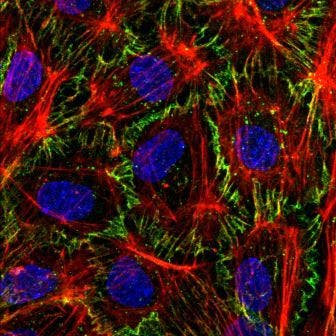
History is rich with scientific discovery leading to our current insights into regeneration. The concept of regeneration dates back to the ancient Greeks (think of Prometheus and his regenerating liver), and since the discovery of embryonic stem cells in the 1980s, a whole new frontier of biomedical research has emerged. There is nothing in the natural world that rivals a stem cell. We now know that life happens because of the power of these special cells. Embryonic stem cells can become all the cell types of our body, and adult stem cells can mature into the cell types of the tissue they originate from. Stem cells coordinate and control the balance of life, and we’re trying to tip the balance in favor of regeneration in order to improve quality of life for those in need of tissue repair or replacement. The discovery of organoids (mini-organs) in Utrecht, together with advanced technologies such as biofabrication and gene editing, has greatly advanced the field of Harnessing our body’s potential regenerative medicine. In Utrecht, we focus on continuing to unravel the underlying scientific principles of this field and aim to transform existing cells and grow new tissues, in such a way that is beneficial for each individual patient. Our regenerative medicine approaches will help make better diagnostics, more effective therapies and quicker healthcare decisions.
For a better view of our work have a look on a few examples following below.
The complicated thing about Wnt uitklapper, klik om te openen
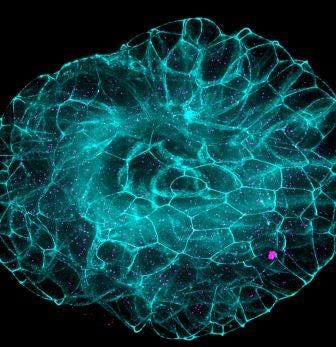
Wnt proteins are highly conserved, meaning that whether you’re a sponge, flatworm, fly or human, you’ve got Wnt. Wnts are small molecules that bind to cell surface receptors and are important for biological events from organ development to tissue regeneration and homeostasis. Improper Wnt signaling results in cancer, metabolic disease and failure to regenerate tissues. Finding the balance between anti-cancer and pro-regenerate mechanisms may lead to innovative regenerative therapies. We’re investigating new regulators of the Wnt signaling pathway in order to understand their role in regeneration so that we can design more specific and powerful drugs for tailored treatment strategies. To this end, we’re using normal and tumor organoids to modulate newly identified regulators and screen novel drugs. Our challenge is to design new molecules that will specifically inhibit Wnts without upsetting other essential biological processes.
CRISPR/Cas9 to correct a genetic muscle disease uitklapper, klik om te openen
Facioscapulohumeral muscular dystrophy (FSHD) is one of the most frequently inherited muscle wasting diseases and has no cure or effective treatment. It’s caused by an abnormally active DUX4 gene, which is so toxic to muscle cells that they die. Studying DUX4 is complicated. It can consist of 11 to more than 100 repeated sections within the genome, making it difficult to target, and DUX4 itself, is involved in the regulation of many other genes. With CRISPR/Cas9 gene editing tool combined with an exonuclease to cut DNA in the right place and chew away a portion of the DUX4 gene, we hope to restore it to normal quiet levels. We’re also looking for targets of DUX4 that are directly related to only the FHSD phenotype, in order to develop an effective therapy.
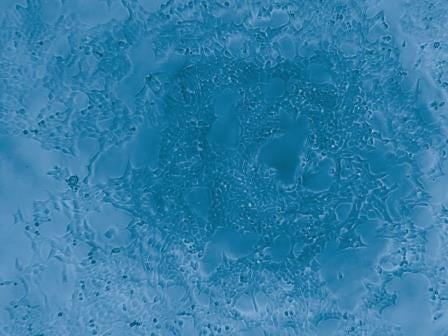
Turning cellular debris into therapy uitklapper, klik om te openen
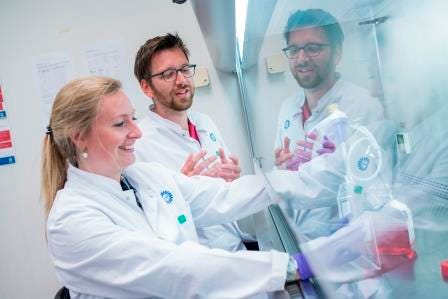
Extracellular vesicles (EV) were once thought of as the garbage bins of a cell - they carried debris out of the cell. We now know that they’re important for communication between cells, as one cell can take up an EV from another cell, thereby potentially influencing the behavior of the new host. Taking advantage of this naturally-occurring process, we’re using stem cell-derived EVs as vehicles to transport factors essential for tissue repair and regeneration or for the delivery of targeted agents such as siRNAs (tools for silencing genes). Hopefully, we can deliver EVs to the damaged area of the heart to stimulate repair. To this end, we’re designing a GMP-compatible (clinical grade) bioreactor for the scalable isolation and production of EVs from stem cells, and improving biomaterials we can use for the slow release of EVs over time.
Stem cell clinical trial for Systemic Sclerosis uitklapper, klik om te openen
Systemic sclerosis is a debilitating autoimmune disease that results in thickening of connective tissue and damaged blood vessels. Patients with this disease develop chronic ulcers on their fingers to point where they can no longer use them for everyday activities, like typing on a mobile phone. Eventually, patients develop severe infections or lose fingers and there is no cure. We’ve designed a pilot clinical trial to inject mesenchymal stem cells (MSCs) locally, into the major muscles of the hands and arms. We expect the MSCs to promote the growth of new blood vessels by secreting beneficial factors and interacting with local tissue cells.
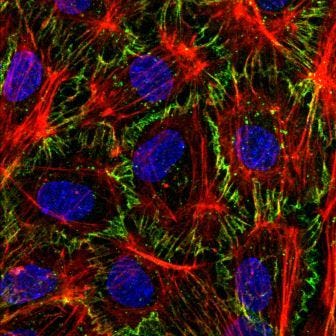
Bioengineered liver uitklapper, klik om te openen
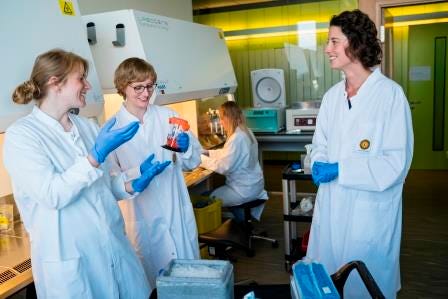
Drug-induced liver injury is the leading cause of acute liver failure in the developed world, and the main reason for drug failure during clinical trials. This is not only a huge health issue, but also has an enormous financial impact on pharmaceutical companies. We’re combining liver organoids (mini-organs) with hydrogels and bioprinting to make a reliable model system to predict drug-induced liver injury before a drug enters the pre-clinical phase. Since the organoids are patient-derived, we can also use this model system to predict a specific patient’s response to a variety of drugs before treating this patient. In another project, we’re planning to use a special hydrogel that can be broken down by the liver cells, so that they can fuse together to build bigger functional liver units with incorporated blood vessels. Ultimately, we aim to restore liver function with these implantable bioengineered liver tissues.
Stem cell-based therapy for a torn meniscus uitklapper, klik om te openen
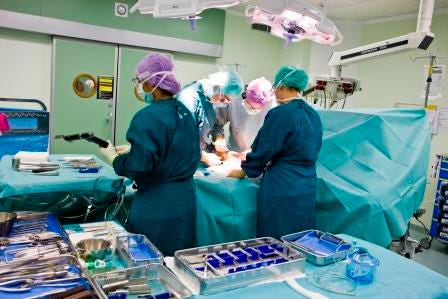
There is no treatment for a ruptured or torn meniscus (joint cartilage of the knee) and surgical removal leads to increased chance of early osteoarthritis. We are mapping out a cell-based procedure based on the IMPACT trial to regenerate the meniscus. Like the IMPACT procedure, patients will undergo surgery, meniscus cells will be extracted and combined allogeneic MSCs and seeded in a collagen meniscus implant (CMI). The CMI is already used in the clinic to substitute part of the meniscus, but it lacks biological activity leading to inferior tissue repair. The treatment under development will be a one-stage procedure, meaning that all steps and implantation of the CMI will take place during the same operation, clearly reducing cost and recovery time.
